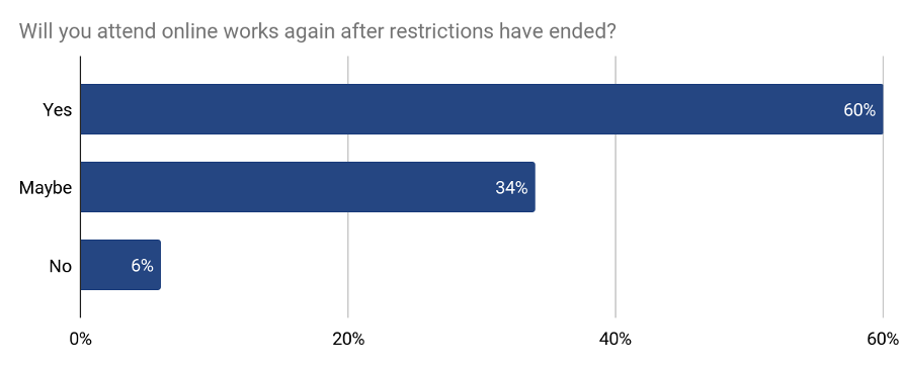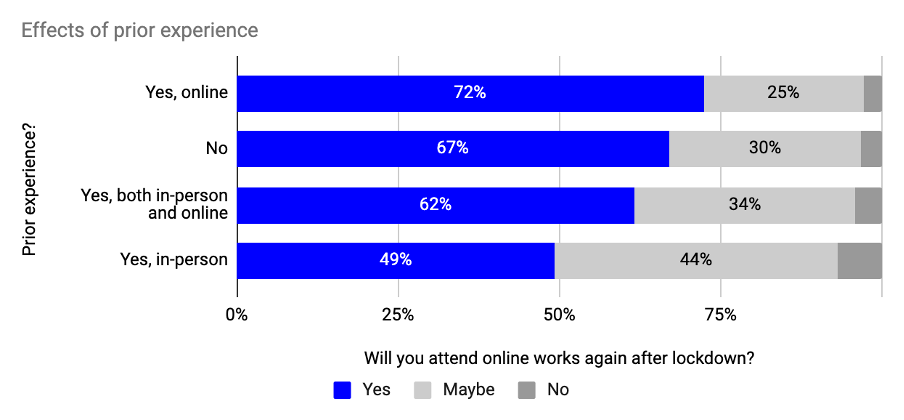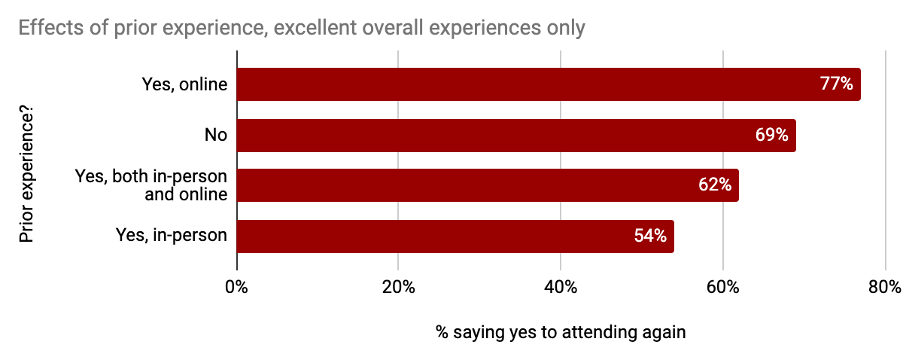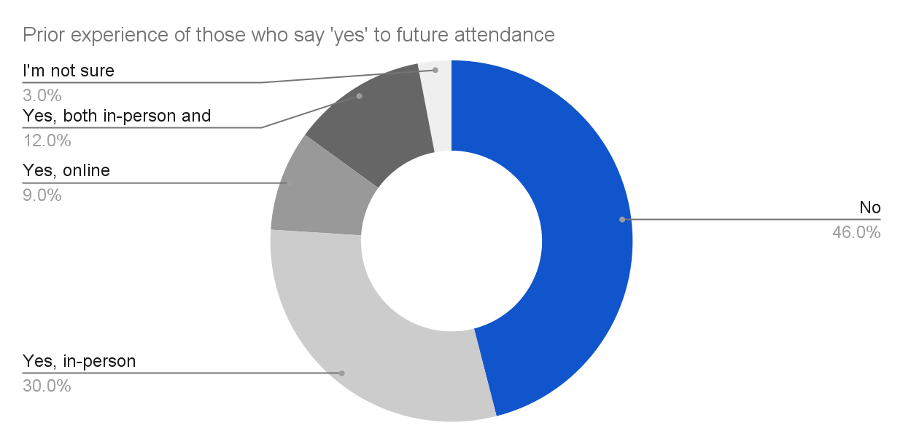This is the final blogpost in the three-part series, resulting from an analysis of the online works data gathered last year. The previous posts were:
- The importance of shared experience when delivering online work
- Unique access barriers for cultural works online
In this blogpost we look at what the data tells us about building audiences for online works: Does building an audience for online works mean poaching from existing in-person audiences? Or is it possible to develop new audiences for the online medium which are in addition to the existing in-person audience?
First, let us look at the proportion of people who say they will seek out online works again after lockdown, independent of any other factors.

n=4568
We see that the majority (60%) say they will attend again, whilst an additional 34% answer that they may attend again; this implies there is doubt in their mind about future attendance and, as such, we will conservatively consider them as unlikely future attendees.
This is useful to give us a general sense of how keen people are for online works. However, it doesn’t give us an accurate measure of potential audience numbers, given the unique circumstances which resulted in many NPOs making an online offering. People might be more willing to re-attend to support the organisations they love.
We can break these figures down to see if there are ‘types’ of people that are more likely to attend online works again.

n: ‘Yes, online’=210, ‘No’=1138, ‘Yes, both in-person and online’=315, ‘Yes, in-person’=985
In doing this, we see that having no prior experience in-person resulted in people being more likely to attend online works again after restrictions had ended.
49% of those who had prior experience of the NPO’s work in-person said they would attend again after lockdown, whereas 67% of those who had no prior experience said the same.
One possible cause for the above finding is that those who have prior in-person experience didn’t enjoy the online experience as much; this may be due to different demographics, backgrounds, or a comparison of the online to the in-person experience. We can control for this in part by only considering those that described their overall experience as ‘Excellent’ and then look at their likelihood to re-attend.

n=1297
We still see the same pattern – a larger proportion of those with prior in-person experience only are saying ‘Yes, it was excellent, but I don’t plan on attending again’.
Finally, whilst we can be confident that people who haven’t been to an in-person performance from that NPO before are more likely to re-attend, we should get a sense for how many people that is; it might only be a small number.

n=2823
Of those who said yes, they would attend again, 46% had no prior experience of that organisation’s work at all, and 9% had only online experience. That means 55% of the re-attendance figures are not coming from existing in-person audiences, but rather from new or online only audiences.
In summary, the data shows:
- An appetite for attending online works in general, with 60% of those surveyed saying they will attend again
- Those who have not been to an in-person event were much more likely to re-attend an online work
- This effect is not caused by the perceived quality of the overall experience had by the audience
How can we make use of this? One approach would be for organisations to advertise online events in places which are frequented by people who consume online and digital content more often. There might be some costs associated with this, for example paying for adverts on YouTube, but the findings here indicate that this would be effective, and the potential reach of these methods are significant.
If advertising on digital platforms is coupled with improvements in the ease of access to online works, both in terms of the buying of tickets and in getting the technology working (as discussed in the previous blogpost ‘Unique access barriers for cultural and online works‘), then organisations could see their audiences for online works grow and persist beyond their existing audiences.
Main images: Photo by Ben White on Unsplash